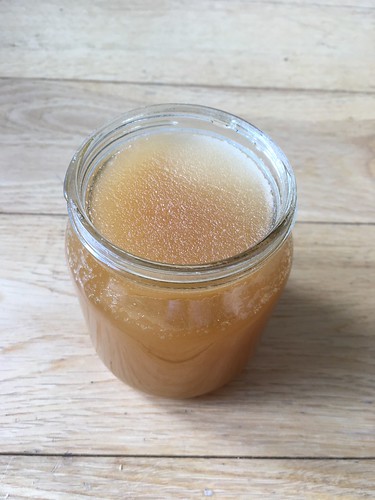While I was sorting out our jars of honey to take to the Fortismere Christmas Fair on Sunday I noticed that some our honey has started to set. Some people seem to have very strong preferences about whether they like set or runny honey and many people ask me about why honey goes through this process.
Nearly all honey will naturally set eventually. The time that it takes to set depends on which flowers the bees have been foraging on. Lime tree honey sets extremely slowly, whereas ivy and oil-seed-rape honey can set in the comb before the beekeeper has a chance to extract it.
Simply put, honey is a mixture of glucose and fructose. Nectar from different flowers contains different proportions of the two sugars. Setting of honey is caused by the crystallization of the glucose, so honey with a low proportion of glucose will set more slowly than one with a higher proportion.
There are a couple of other factors that will influence the crystallization speed. Low temperatures will speed up the setting process. Honey with plenty of pollen grains tends to set more quickly too. The reason is that the microscopic grains act as starters for the crystals to grow around. Commercial honey is often fine filtered at high temperatures in order to remove the pollen in order to slow down the setting rate and increase the shelf life of their honey – set honey apparently doesn’t sell so well! I’d suggest that the opposite is true as we often have people asking if we have any set honey…
The good news is that set honey is perfectly edible, and is another delicious way to enjoy honey! If you really must have runny honey, then you can stand the jar in a bowl of warm water, or warm it extremely gently in the oven. I’d never recommend using the microwave as you’ll end up with hot spots.
If you’d like to try some of our set honey, Lot #34 is available in our website shop
I’ll make a note in the descriptions of the other lots if they set too.

